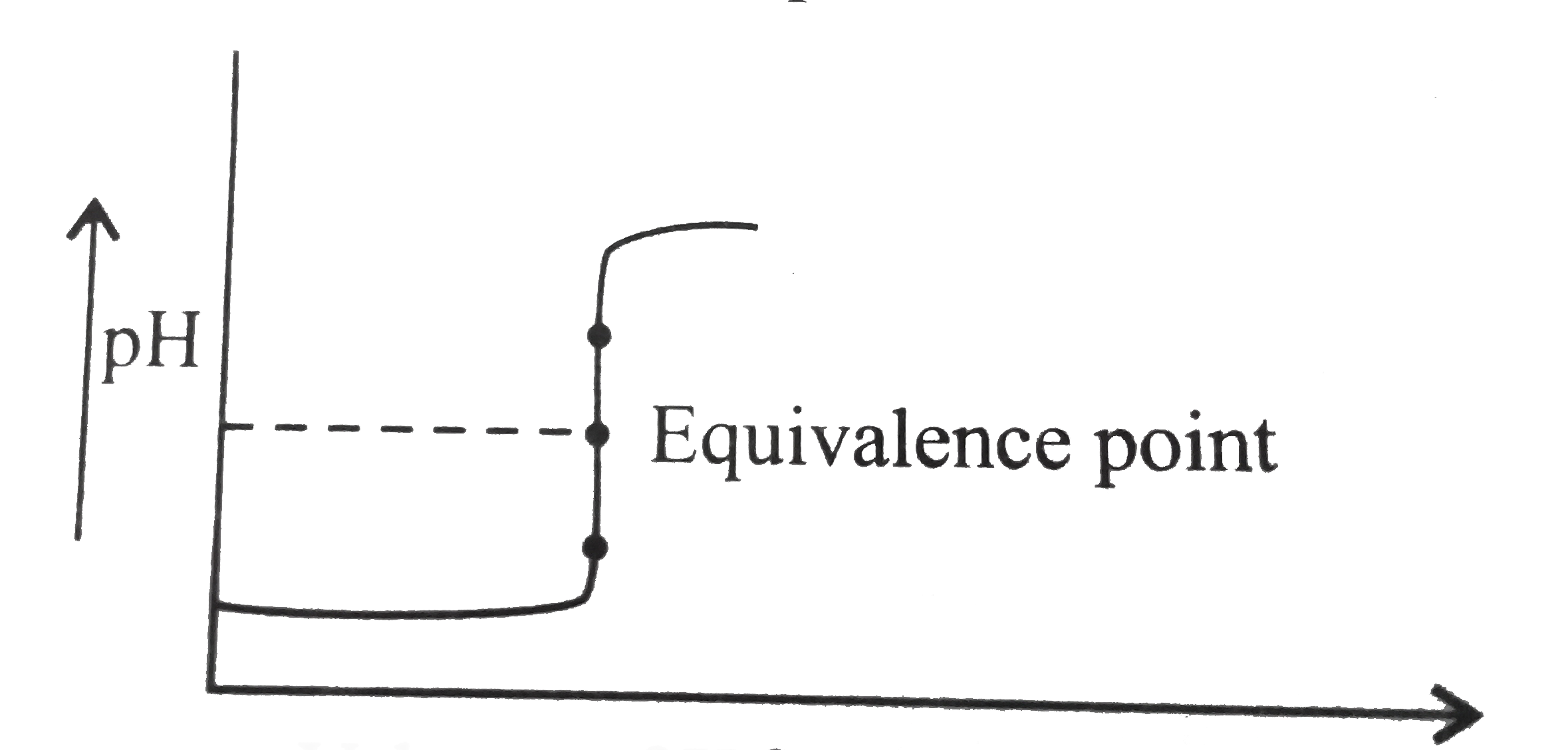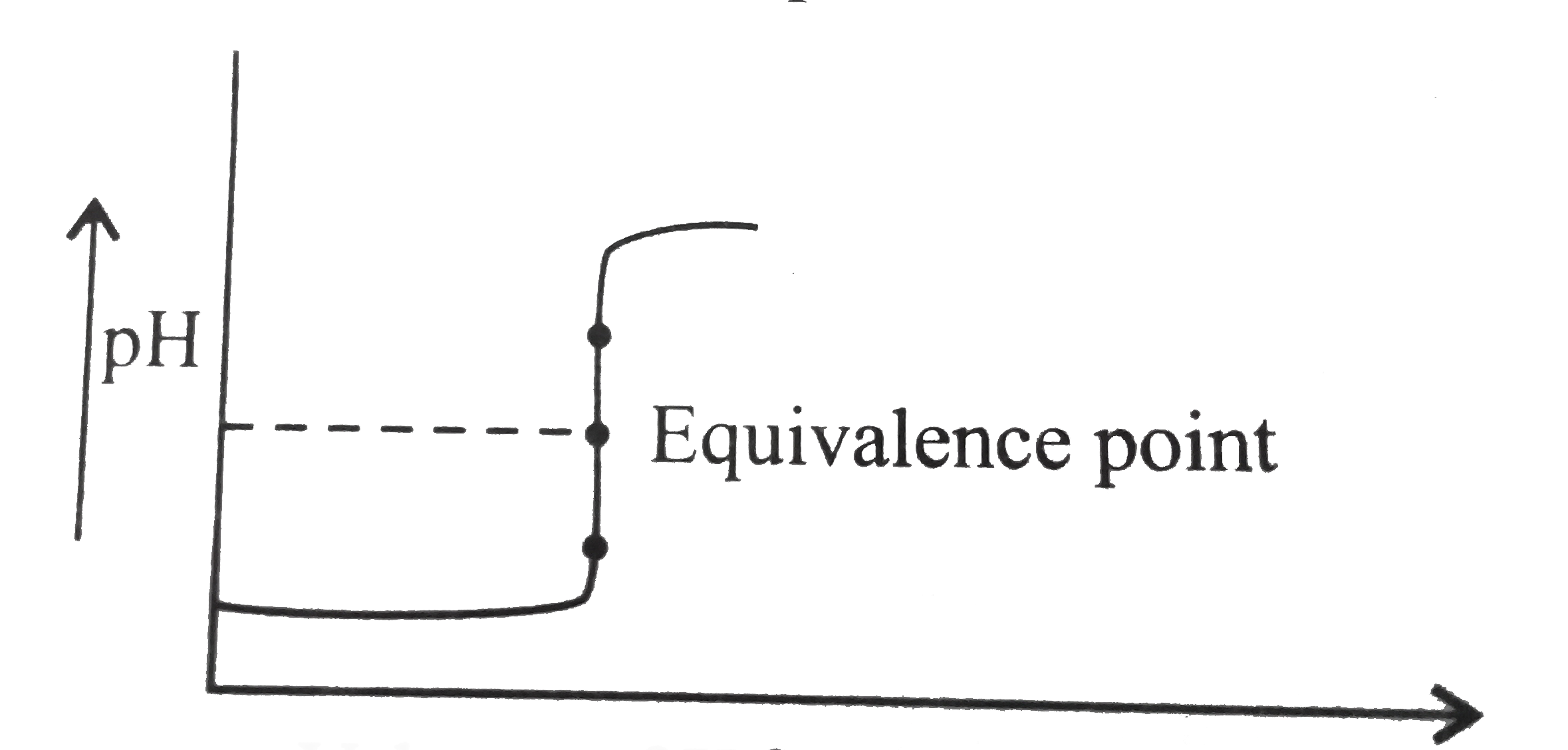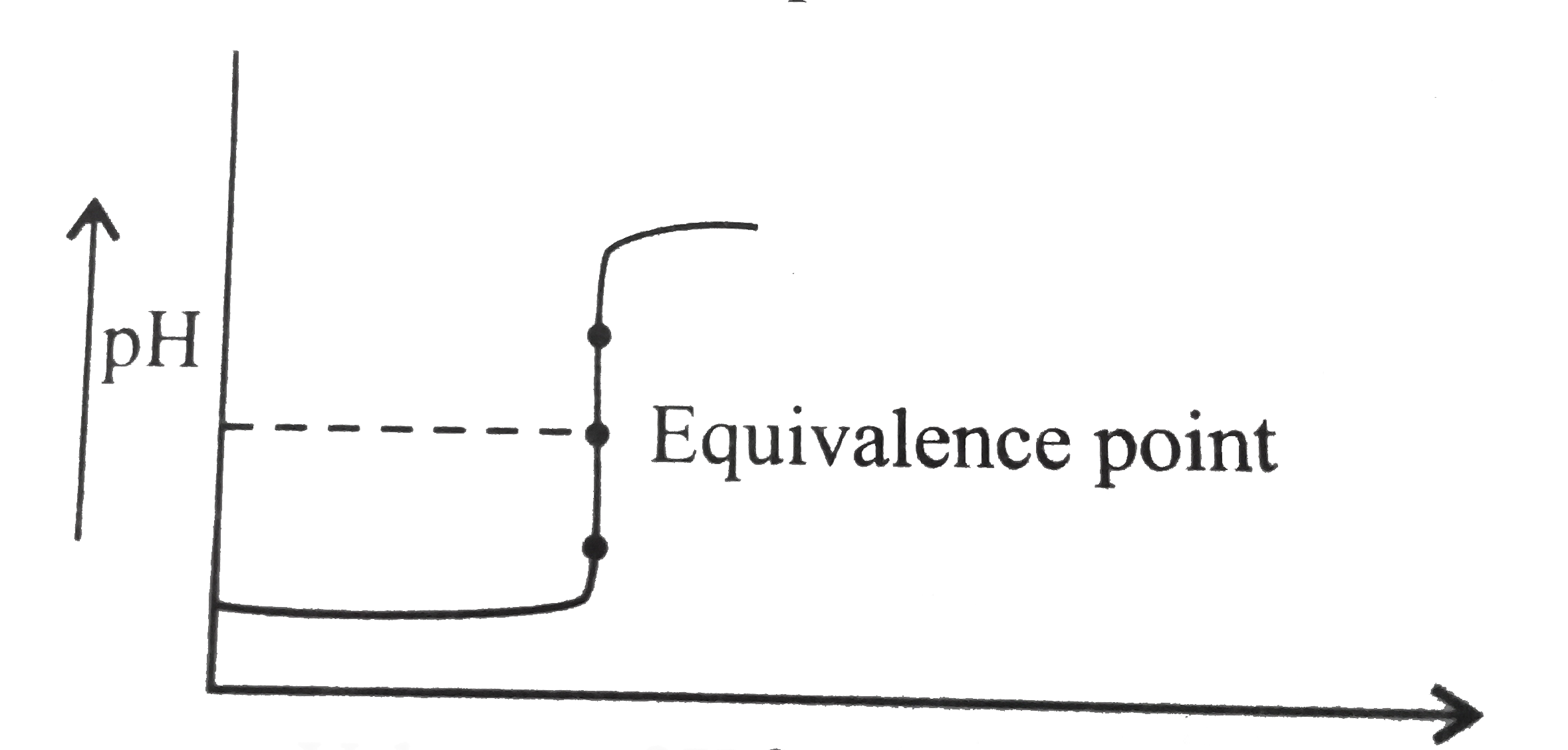There are three acid-base indicators. Methyl orange (end point at pH=4), bromothymol blue (end point at pH−7), phenolphthalein (end point at pH=9). Which is the most suitable indicator for the following titrations?
(a). H2SO4 with KOH
(b). KCn with HCl
(c). NH3 with HNO3
(d). HF with NaOH
(a). Strong acid and strong base: any indicator can be used.
(b). Strong acid and salt of weak acid and strong base: Methyl orange is suitable.
(c). Weak base and strong acid: Methyl orange
(d). Strong base and weak acid: Phenolphthalein.
Topper's Solved these Questions
- STOICHIOMETRYBOOK - CENGAGE CHEMISTRYCHAPTER - STOICHIOMETRYEXERCISE - Ex 3.1
3 Videos
- STOICHIOMETRYBOOK - CENGAGE CHEMISTRYCHAPTER - STOICHIOMETRYEXERCISE - Ex 3.2
3 Videos
- STATES OF MATTERBOOK - CENGAGE CHEMISTRYCHAPTER - STATES OF MATTEREXERCISE - Exercises (Ture False)
25 Videos
- THERMODYNAMICSBOOK - CENGAGE CHEMISTRYCHAPTER - THERMODYNAMICSEXERCISE - Archives (Subjective)
23 Videos
Similar Questions
There are three acid-base indicators: methy1 orange (end point at pH=4), bromothymol blue (end point pH=7), and phenolphthalein (end point at pH=9). Which of the following would you select for the titrations?
a. H2SO4 with KOH b. KCN with HCI
c. NH3 with HNO3 d. HF with NaOH
View SolutionWhat indicators will be suitable for the following acid-base titrations:
a. HCOOH against NaOH
b. HBr against KOH
c. NH4OH with HNO3
View Solution
Knowledge Check
Which of the following indicators is the best indicator for the detection of end point in the titration of CH3COOH and KOH ?
Amethyl organgeBphenolphthaleinCmethyl redDnone of theseThe pH at the equivalence point of titration of 0.2 M NH3 with 0.2 M HCl is
A9.72B9.87C5.13D4.98(A) In general phenolphthalein is used as an indicator for the titration of weak acid (CH3COOH) and strong base (NaOH).
(R) At equivalence point solution is basic.ABoth (R) and (A) are true and reason is the correct explanation of assertion.BBoth (R) and (A) are true but reason is not correct explanation of assertionCAssertion (A) is true but reason (R) is falseDAssertion (A) is false but reason (R) is true
A weak base MOH was titrated against a strong acid. The pH at 14 the equivalence point was 9.3. What will be the pH at 34 th equivalence point in the same titration? (log3=0.48)
View SolutionIn acid-base titration react rapidly to neutralise each other. Equivalence point is a point at which the acid and the base (or oxidising agent and reducing agent) have beem added in equivalent quantities. The end point in the point at which the titration stops. since the purpose of the indicator is to stop the titration close to the point at which the acid and base were added in equivalent quantities, it is important that the equivalent point and the end point be as close as must change colour at a pH close to that of a solution of the salt of the acid base. Singificantly, the pH changes most rapidly near the equivalent point. The exact shape of a titration curve depends on Ka and Kb of acid and base.

The suitable indicator for the titration is
View SolutionIn acid-base titration react rapidly to neutralise each other. Equivalence point is a point at which the acid and the base (or oxidising agent and reducing agent) have beem added in equivalent quantities. The end point in the point at which the titration stops. since the purpose of the indicator is to stop the titration close to the point at which the acid and base were added in equivalent quantities, it is important that the equivalent point and the end point be as close as must change colour at a pH close to that of a solution of the salt of the acid base. Singificantly, the pH changes most rapidly near the equivalent point. The exact shape of a titration curve depends on Ka and Kb of acid and base.

The pH at equivalence point is
View SolutionIn acid-base titration react rapidly to neutralise each other. Equivalence point is a point at which the acid and the base (or oxidising agent and reducing agent) have beem added in equivalent quantities. The end point in the point at which the titration stops. since the purpose of the indicator is to stop the titration close to the point at which the acid and base were added in equivalent quantities, it is important that the equivalent point and the end point be as close as must change colour at a pH close to that of a solution of the salt of the acid base. Singificantly, the pH changes most rapidly near the equivalent point. The exact shape of a titration curve depends on Ka and Kb of acid and base.

The curve represents the titration of
View SolutionAcid-base indicator such as methy1 orange, phenolphthalein, and bromothymol blue ate substances which change colour accroding to the hydrogen ion concentration of the solution to which they are added.
Most indicators are weak acids (or more rarely weak base) in which the undissociated and dissociated forms have different and distinct colours. If methy1 orange is used as the examples and the un-dissociated forms is written as HMO, then dissociation occurs as shown below:
Reaction: HMO⇔H⊕+MOΘRedColourlessYellow
The indicator should have a sharp colour change with the equivalence point of the titration. Usually the colour change of the indicator occurs over a range of about two pH units. It should be noted that the eye cannot detect the exact end point of the tiytration. The pKa of the indicator should be near the pH of the solution at the equivalance point.
Which of the following sitution exists at the equivalence point of titration?
View Solution
